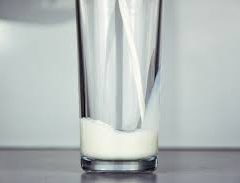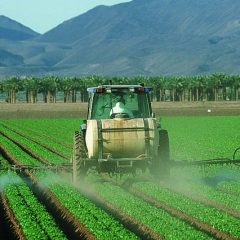Frequently Asked Questions About the Study: “Higher PUFA and omega-3 PUFA, CLA, α-tocopherol and iron but lower selenium concentrations in organic milk: a systematic literature review and meta- and redundancy analyses.” February 16, 2016. British Journal of Nutrition Authors: Dominika Średnicka-Tober, Marcin Barański, Chris J. Seal , Roy Sanderson, Charles Benbrook, Håvard Steinshamn, Joanna Gromadzka-Ostrowska, Ewa Rembiałkowska, Krystyna […]
Fifteen papers in this workshop proceedings cover the multiple health benefits of CLAs. Milk, most dairy products, beef, lamb, and pork are the major dietary sources of CLA. The “magical properties” of CLA include reducing the propensity to store fat (especially abdominal fat), inhibiting tumor development, promoting sensitivity to insulin in cells, increasing immune response […]
Read More, References, Comment »
Over the last forty years nitrogen fertilizer use has increased seven-fold and nearly every acre of intensively farmed, conventional cropland is treated with pesticides. A team of scientists explored the impact of pesticides and other environmental toxicants on symbiotic nitrogen fixation (SNF) brought about by Rhizobium bacteria (Fox et al., 2007). Their findings were published […]
Read More, References, Comment »
Frequently Asked Questions About the Study: Organic Production Enhances Milk Nutritional Quality by Shifting Fatty Acid Composition: A United States–Wide, 18-Month Study, Published in PLOS ONE, December 9, 2013. Authors: Charles M. Benbrook, Gillian Butler, Maged A. Latif, Carlo Leifert, Donald R. Davis Introduction Major Findings Implications for Consumers Impacts on Milk Production About the Study See also: […]
Click to view additional related posts Introduction Fatty Acids Impacts of Livestock Feeding Regimes Additional Resources See also: Nutritional Quality Home Antioxidants Nutrient Profiling Systems Organic vs. Conventional Foods Other Choices and Challenges Primer on Fatty Acids in Milk PLOS ONE Study on Fatty Acids in Conventional vs. Organic Milk Related Documents Introduction For decades […]
Hygeia Analytics Funding Thoughts on Funding and Scientific Integrity Chronology of Dr. Benbrook’s Work and Funding The New York Times Weighs In The Impact of Funding on Dr. Benbrook’s Work Special Interest Science Must – and Can — Earn the Benefit of Doubt See also: About Hygeia Analytics Site Map and Keywords Hygeia Analytics- Who […]
The Hygeia Analytics Team About Dr. Benbrook List of Dr. Benbrook’s Peer-Reviewed Publications Dr. Benbrook’s Participation in Congressional Hearings See also: About Hygeia Analytics Site Map and Keywords Why Hygeia? Thoughts on Funding and “Sound Science” Acronyms and Glossary The Hygeia Analytics Team The original content of Hygeia Analytics, and narrative presented without attribution to […]
This study reports some remarkable numbers quantifying the economic impact of exposures to endocrine disrupting chemicals. Pesticides cause the second largest impact — some $44 billion — right behind flame retardants. While worrisome enough, the huge increases now occurring in herbicide, insecticide, and fungicide use on farms growing the three major genetically engineered (GE, or GMO) crops (corn, soybeans, cotton) is bound to markedly increase exposures, reproductive problems, birth defects, and a host of life-long health problems. Hopefully sooner rather than later, the agricultural commodity groups and farmers will rediscover prevention-based Integrated Pest Management (IPM) and start to reduce their…
Read More, References, Comment »
Introduction Diversified Cropping Systems Organic Farming See also: Yields- Organic vs. Conventional Introduction Modern industrial agriculture relies heavily on large, monoculture fields with the two main crops- corn and soybeans- grown on a two-year rotation. Chemical herbicides and fertilizers are heavily used to support this intensive agriculture. Extensive herbicide use leads to weed resistance and […]
Click here to view additional related posts Impacts on Herbicide Use Impacts on Insecticide Use Net Impacts of GE Crop Technology 2012 Environmental Sciences Europe Paper Glyphosate Use 2,4-D and Dicamba Herbicide Timelines Dynamic Presentations Pesticide use encompasses the applications of herbicides, insecticides, fungicides, soil fumigants, and several other types of pesticides targeting other organisms. […]



